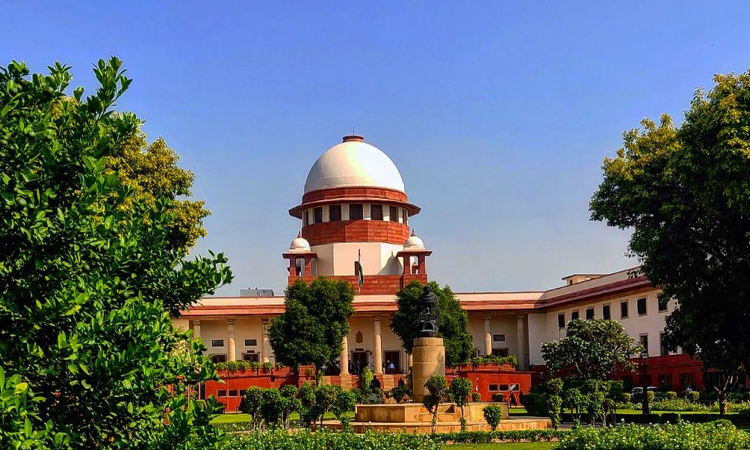Pendency Issue In Indian Courts Can Be Resolved By Increasing Judicial Strength By 20% | Column
Shailesh Gandhi
22 Nov 2022 4:27 PM IST

During an interview with Indian Express reported on 9 November 2022 Chief Justice of India Justice DY Chandrachud said: "There are some key areas which need to be attended to. First and foremost, the unfilled posts in judiciary. The need to fill up all posts in the judiciary, beginning with the district judiciary, high courts and, ultimately, the Supreme Court." The CJI has identified his first priority with a great understanding that filling vacancies must be his first priority since it could resolve the issue of judicial backlogs.
The Supreme Court in its judgments has repeatedly said that India needs 50 judges per million population. Presently the sanctioned strength is about 18 judges per million population and the working strength is about 14 judges per million. The present sanctioned strength is about 25000 judges with about 5000 vacancies not filled. The judiciary and the legal profession have accepted the delays in the judicial delivery system as being impossible to cure and have adopted the saying 'Hurried Justice is Buried Justice.' Niti Ayog's Strategy document on 75 years of Independence states: 'A study carried out by the Ministry of Finance found that it takes, on an average, almost 20 years for a property related dispute to be resolved, and that it would take 324 years just to clear the present backlog at the current rate of disposal.' Some people have started believing that cases have to mature like whisky for a good judicial performance.
Most services have improved in the last 75 years: Public health, roads, communication, public transport et al. The improvements may not have been as much as citizens would desire, but it cannot be denied that there has been some improvement. There is only one area which has constantly deteriorated: Our judicial delivery system. The backlogs have been constantly increasing and our rule of law index is at 79 presently. Whereas the average time taken by European Courts is about six months, the average time taken in Indian Courts is 30 months! Our current pendency is over 48 million cases with the powerful and rich having the facility of expediting or delaying cases at will.
We decided to understand logically how many judges would be required to overcome the delays in our judicial delivery system. The evident answer is that if the increase in backlog is overcome, the pendency would remain constant. If additional judges are available, the pendency would go down. We used data from the Supreme Court website for the twelve year period 2006 to 2017 to analyze this. We looked at the number of cases instituted in the Subordinate courts, High Courts and the Supreme Court for each year. We also analysed the number of judges which were sanctioned for each level and the number of judges employed. It was a surprise to realise that the average vacancies were 21%, 32% and 11% respectively. We decided to use the average disposal per judge in each year to estimate how many extra cases could have been disposed if the vacancies had been filled.
The results were counterintuitive. The average increase in the backlog over the twelve year period was less than 3% per year. If the vacancies had been filled there would have been no backlog; the pendency would have gone down each year and there would be no serious backlog within of over six months within 6 to 8 years. Some people said that our methodology and analysis was too simple and hence taking such averages was flawed. We realized that the 245th report of the Law Commission headed by Justice AP Shah had used the same rate of disposal method to estimate the requirement of judges. Recently, Shri Sanjeev Sanyal,- Principal Economic Adviser, to the Government of India- stated we only need an extra 2400 judges to ensure no increase in judicial pendency. This finding appears to be in line with our results. Also our detailed analysis shows that the Standard Deviation in the annual disposals of cases is just 6% for Subordinate Courts, 8% for High Courts and 11% for the Supreme Court on a year to year basis. This indicates that the disposal per judge is a reasonable way to estimate the additional judges required.
Thinking that we need 50 judges per million population leads us to a conclusion that we need to increase our judicial staff and infrastructure by about 250% and hence the problem appears to defy solution. Logical, disciplined analysis shows that we only need an increase of about 20% to resolve the issue of unacceptable delays. The extra cost involved would be only about 20%. Given the fact that our State and Central expenditure on the justice system is less than 1% , we can easily increase it to about 1.2% of our total expenditure. Incase Infrastructure costs and time required are difficult challenges, about 5000 courts could work in two shifts as proposed by Justice NV Dhabolkar.
A simple solution exists which does not require major changes or reforms. The Chief Justice has understood this and hope he convinces the Chief Justices of the High Courts during their conference on 26 November when they are meeting on the occasion of the Constitution Day. He has identified it as his first priority and citizens and media should extend complete support. India can get a timebound judicial system.
The author is a former Central Information Commissioner and an activist campaigning for RTI rights and judicial reforms.


